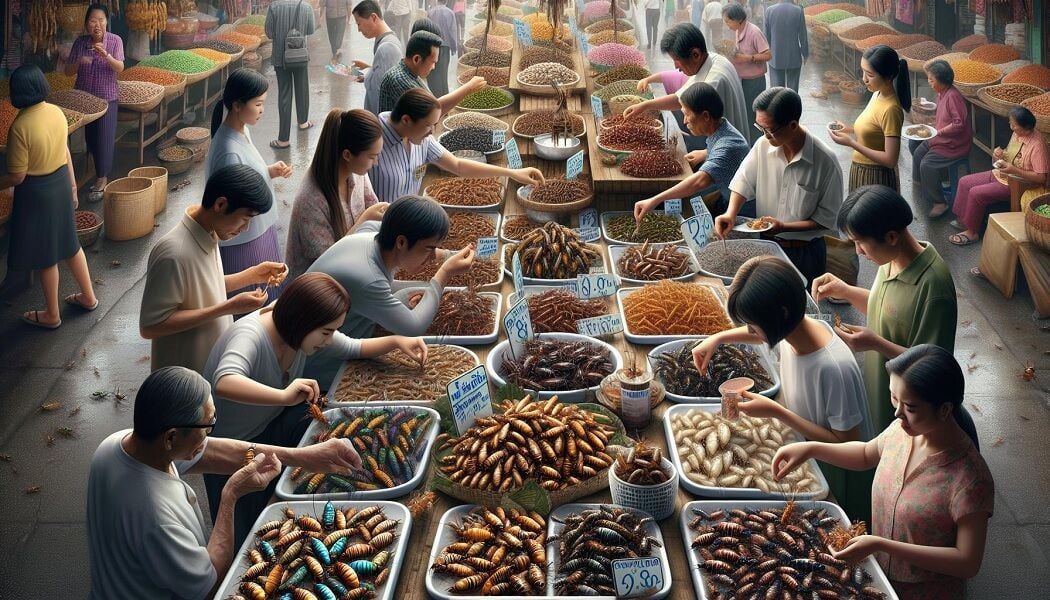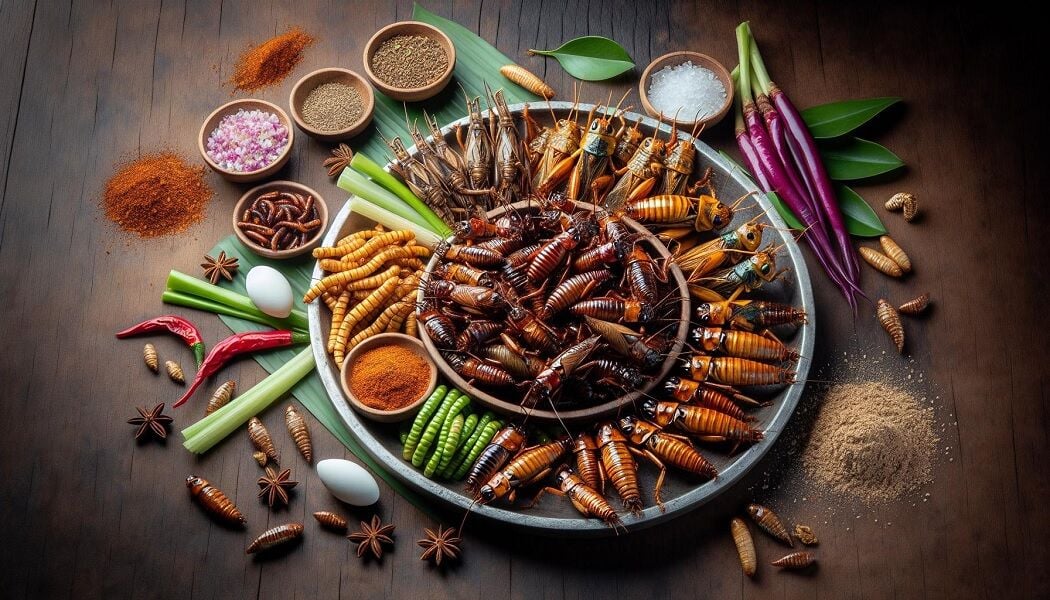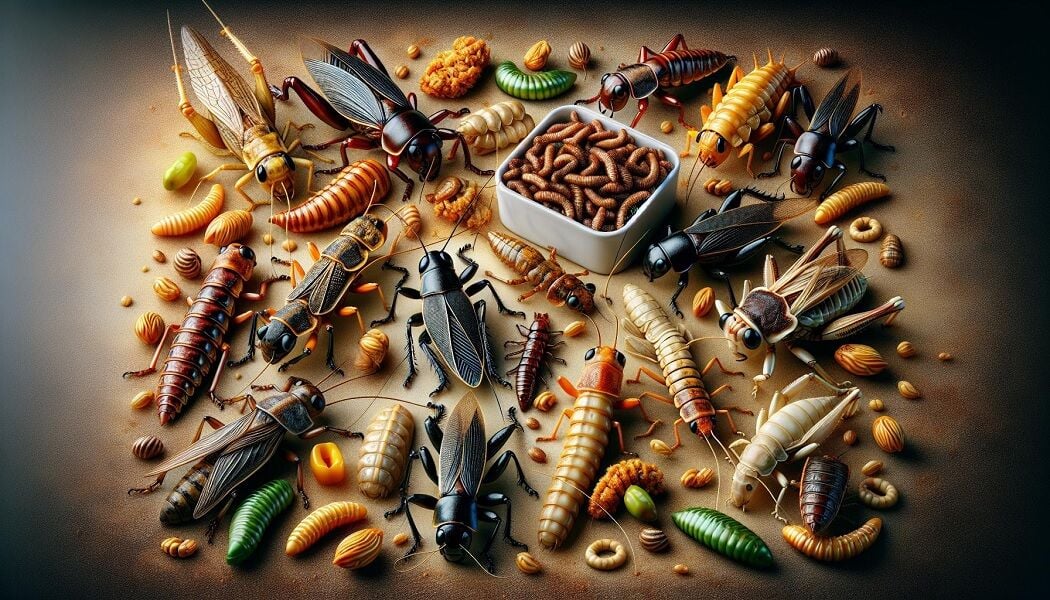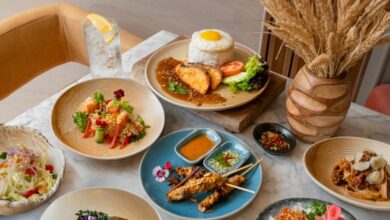Thailand’s shift to sustainable protein through edible insects

In Thailand, the fascination with edible insects extends beyond simple curiosity; it embodies a seamless integration of tradition, innovation, and sustainability. The country’s markets and dining establishments showcase a wide variety of insects including bamboo caterpillars, crickets, and ant eggs, appealing to both culinary adventurers and proponents of sustainable food sources. This culinary endeavour presents a compelling investigation into alternative protein sources.
The practice of entomophagy (the consumption of insects) within Thai culture is a deep-rooted tradition that augments the nation’s culinary landscape with diverse flavours and textures. These include the crispiness of fried silkworm pupae to the subtle tastes of ant larvae. Thailand’s dedication to leveraging its extensive biodiversity and culinary creativity is manifest in its dynamic edible insect sector.
Furthermore, this practice carries significant economic implications. According to data from the Customs Department of Thailand, there exists an expanding industry marked by rising domestic consumption and growing international demand. This amalgamation of cultural heritage with commercial potential demonstrates that this phenomenon surpasses being merely a gastronomic curiosity; it represents a move towards more sustainable eating habits on an international level.
Overview of edible insects in Thailand
In the realm of entomophagy, Thailand emerges as a pivotal centre for both its traditional consumption and pioneering culinary innovations. Edible insects constitute an integral component of Thai cuisine, functioning not merely as a facet of cultural legacy but also as a crucial dietary element that enhances the nation’s gastronomic identity. Various species such as crickets, bamboo caterpillars, and ant eggs are prominently incorporated into the cuisine, presenting a crunchy and nutritious alternative to traditional protein sources.
Since 2004, strategic initiatives have fortified Thailand’s stature as a leading producer within the Asia Pacific region. The meticulous expansion of product lines coupled with an efficiently orchestrated supply chain highlights Thailand’s commitment to spearheading advancements in a more sustainable and innovative food sector. The methodologies utilized in insect farming and processing not only pay homage to time-honoured traditions but also embrace contemporary techniques to ensure consumable quality and safety standards.
The flourishing segment of edible insects in Thailand exemplifies an adept fusion between cultural legacy and modern entrepreneurial endeavours. This industry offers insights into a future where sustainable dietary practices are universally adopted and celebrated—a testament to Thailand’s pioneering role in redefining global food sustainability narratives.
Common edible insects in Thai cuisine

Thailand’s distinguished culinary heritage encompasses an extensive array of components, including edible insects that offer distinctive flavours and nutritional advantages to its cuisine. These factors not only introduce a degree of intrigue but also correspond with sustainable food practices. The discourse will examine various predominant edible insects assimilated into Thai culinary traditions, highlighting their unique tastes and culinary uses.
Crickets
In Thailand, crickets are a fundamental component of the edible insect array. Renowned for their crunchy consistency and nutty taste, they are commonly prepared fried, introducing a crisp dimension to culinary preparations. Gryllus bimaculatus and Acheta domesticus rank among the favoured species, cultivated on a large scale for consumption. These insects are rich in protein, presenting them as an eco-friendly alternative to conventional meat products. Often featured as a delicacy at nocturnal markets, they are seasoned with Thai spices which enhance their innate flavour.
Mealworms
Tenebrio molitor mealworms are increasingly embraced within Thai gastronomy, transitioning from mere animal fodder to an acceptable component for human diets. Their preparation spans diverse methodologies, ranging from serving as a crunchy enhancement on pizzas to augmenting salads and yoghurts with their protein content. The subtle sweet and nutty taste of mealworms pairs well with various recipes. Cultivated in controlled settings, these insects meet the surging demand for sustainable and ethically sourced food options.
Grasshoppers
Grasshoppers garner substantial preference amongst Thailand’s edible insect offerings. Esteemed for their substantive texture, they are predominantly served fried with either salt or traditional Thai seasonings. As potent sources of protein and minerals, grasshoppers epitomize sustainable dietary choices. These unique culinary elements challenge gastronomical norms while offering insights into Thai culture and potential future food resources.
Health benefits of consuming edible insects

Exploring the realm of edible insects not only reconnects one with a venerable culinary heritage but also unveils substantial health advantages. These diminutive organisms offer a remarkable concentration of nutrients that may exceed expectations.
Primarily, insects are an exceptional source of protein, frequently surpassing traditional meat options in protein content per 100 grams. This positions them as an outstanding alternative for fulfilling daily protein requirements. However, their nutritional value extends beyond protein. Furthermore, the adoption of insects as food contributes to more sustainable dietary practices. Their cultivation demands markedly less water, feed, and land compared to conventional livestock farming, thus diminishing one’s ecological footprint. This transition towards sustainability not only aids environmental conservation but also bolsters global food security by ensuring the availability of nutritious sustenance for future populations.
Edible insects are also recognized for their unique bioactive compounds including antioxidants which combat oxidative stress within the body. Ongoing research identifies these insects as sources of natural antioxidants with potential roles in preventing diseases associated with oxidative stress. Particularly noteworthy is the silkworm; distinguished by its considerable flavonoid content linked to lowering chronic disease risks. Incorporating edible insects into one’s diet offers a method to diversify culinary experiences through new flavours and textures thereby making healthy eating intriguingly adventurous. Their culinary flexibility allows easy integration into a variety of dishes from snacks to main courses.
Sustainability of edible insect consumption

Eating insects, or entomophagy, introduces a sustainable twist to global food sourcing. Edible insects, often regarded as little funny things, play a crucial role in reducing the environmental footprint of our diets. They demand significantly less land, water, and feed compared to traditional livestock. For instance, crickets require twelve times less feed than cattle to produce the same amount of protein.
Insects are efficient at converting feed into protein. They emit fewer greenhouse gases and less ammonia than conventional livestock, making them a friendlier option for the environment. This efficiency makes edible insects a potent weapon against climate change and food insecurity. Insect farming has a lower impact on biodiversity as well, preserving ecosystems that might otherwise be converted to pasture or cropland.
Moreover, insects reproduce quickly and in large numbers, requiring minimal space. This trait allows for high-density farming that can be vertically integrated into urban areas. It presents an opportunity for cities to become self-sufficient in protein production. In Thailand, the practice of consuming insects is embedded in cultural traditions, providing a blueprint for incorporating sustainable practices into modern diets globally.
Additionally, water usage is drastically lower in insect farming. For every kilogram of beef produced, thousands of litres of water are needed, whereas insect farming requires just a fraction of that amount. This aspect is particularly relevant in countries facing water scarcity issues.
Pairing wine with Thai food involves balancing the complexity of flavours. Crisp whites like Riesling complement spicy dishes, while aromatic Gewürztraminers enhance Thai herbs and citrus notes. For richer curries, a light-bodied Pinot Noir offers a delicate contrast, making each sip a journey through Thailand’s culinary landscape.

































